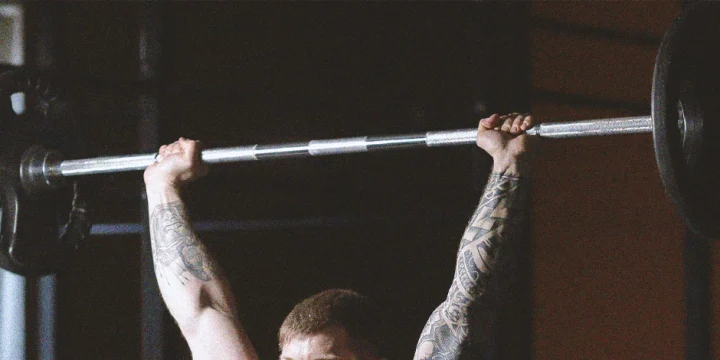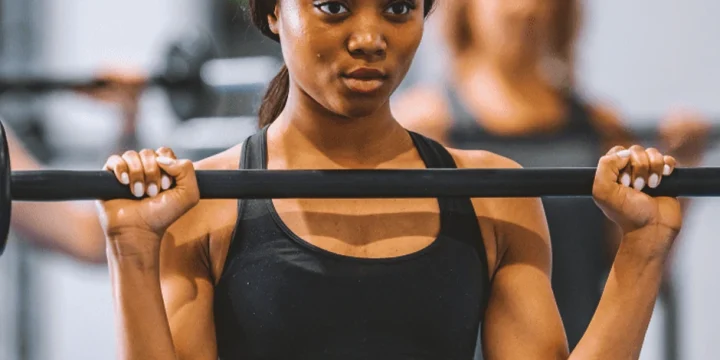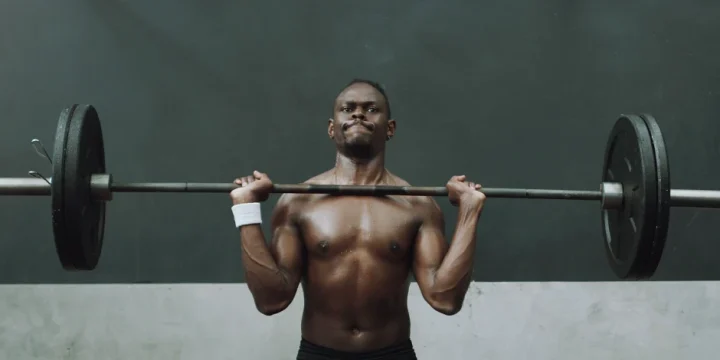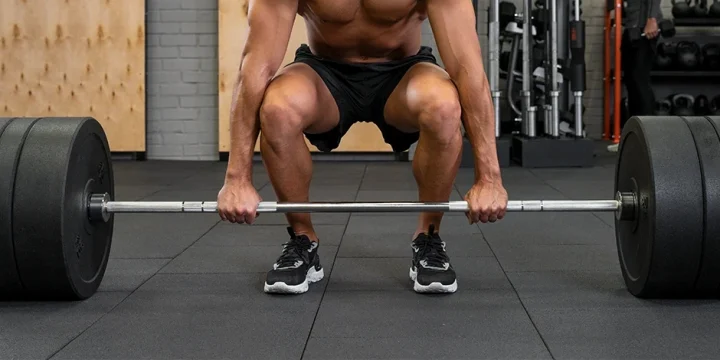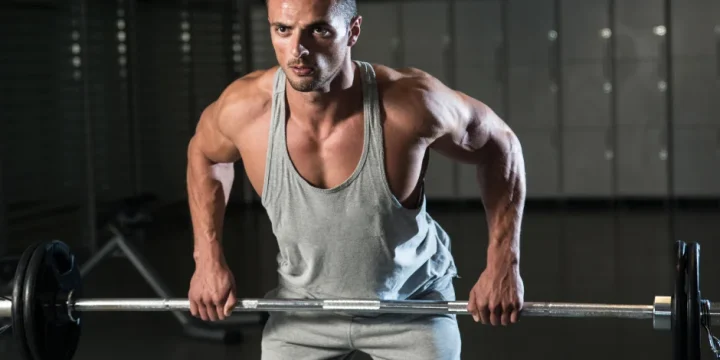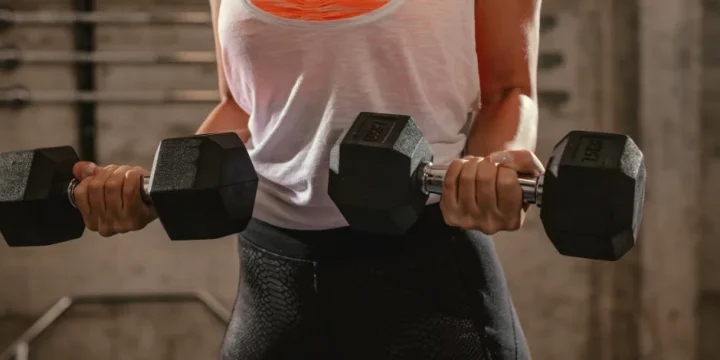As a seasoned fitness trainer, I often advise clients to incorporate pause squats to accelerate their fitness progress.
Knowing that this squat variation can help them get out of the cycle of the same benefits from their technique, I did a week of research and talked to experts to uncover its proper execution to give them further strength improvements.
This article will detail my findings and expertise on performing the pause squats correctly, their benefits, muscles worked, tips, and how to program them in a training regimen.
Quick Summary
- To perform a pause squat correctly, lower yourself into a squat, pause briefly at the bottom to enhance control and engagement of the muscles, then stand back up.
- The pause squat, compared to other squat variations, is excellent for improving squat technique, lower body power, and explosive strength.
- A 2018 study indicates that incorporating pause squats can boost muscle growth more than regular squats, improving strength, stability at the bottom of the squat, and overall performance.
- As a fitness trainer, I often recommend my clients incorporate a pause squat, especially near the peak just past parallel, for significant benefits during challenging moments in squats.
How To Perform Pause Squats

To perform the pause squat properly, execute it similarly to a regular squat by adding a quick pause at the bottom, ensuring your hips remain paused before ascending, and concentrate on the upward movement, putting in maximum force.
Here's how to do it step by step:
- Position your legs hip-distance apart with toes slightly forward based on your comfort.
- Distribute body weight equally between feet, heels, and midfoot.
- Inhale deeply, brace your abdomen with diaphragmatic breathing.
- Start the squat with knees forward, hips slightly back, and legs straight down.
- Ensure parallel alignment of knees and toes, maintaining a forward gaze.
- Keep an upright posture while descending, pausing at the bottom for three seconds (adjustable between two to five seconds) with tension in your abdominal brace.
- Take a deep breath, exhale forcefully, and drive out of the squat's bottom "hole."
- Repeat for the desired reps.
"You must also maintain tension at the bottom. That is essential. Don't rely on the passive restrictions, such as ligaments and tendons, to perform the job for you."
- Tony Gentilcore, Certified Strength & Conditioning Specialist
As a fitness trainer, I've found it crucial to emphasize that pausing at the bottom in squats doesn't alter your tempo, maintaining your usual pace through the eccentric phase. This technique can be applied to various squats, with the back squat allowing for the most significant weight increase.
What Are Pause Squats?
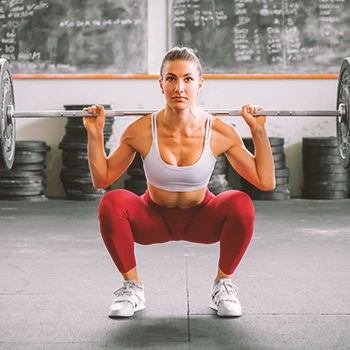
A Pause Squat is a variation where you incorporate a brief pause at the bottom, setting it apart from regular squats.
While you have the option to pause midway between the squat's peak and parallel, the more common practice is to pause at the bottom.
In a pause squat, you come to a full stop at the bottom, maintaining that position for a few seconds before explosively rising from the squat's lowest point
What Are the Muscles Worked

The muscles used in the pause squat are similar to those used in the standard back squat:
- Quadriceps
- Hamstrings
- Glutes
- Erectors
- Inner Thigh Adductor Magnus (AM)
- Upper Back and Lats
- Calves
- Abdominals and Obliques
In my training experience, the pause squat really targets the quad muscles. When your knee muscles are under a lot of stress in this squat, it makes your quads work extra hard to generate force from a complete stop.
The Benefits of Pause Squats

Pause squats provide a unique twist to your regular squat routine, offering various benefits.
Enhances Concentric and Quad Strength
In a typical squat, the stretch reflex muscle is often relied upon to lift the weight back up, reducing the focus on quad muscles. A pause squat, however, emphasizes the quad's concentric power, making the exercise more challenging and contributing to bigger quads and a stronger back squat, as per PubMed research [1].
Enhance Other Lifts
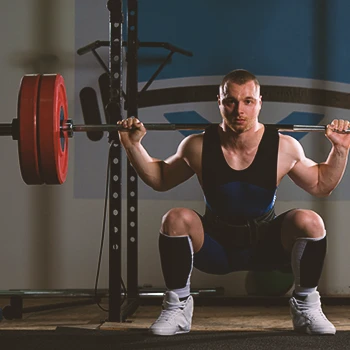
Olympic lifts like power cleans, snatches, and clean and jerks (with all benefits) involve pushing up from a paused position, similar to pause squats. This variation also benefits the deadlift by promoting upward movement from a bent-knee stance.
Read More: Best Olympic Barbells of 2024
Greater Time Under Tension (TUT)
According to a research from PubMed, the isometric contraction sustained at the bottom of pause squats increases time under tension, promoting muscle hypertrophy more effectively than regular squats [2].
Strengthening Knee Extensors

Unlike some other squat variations, pause squats demand increased knee extension, beneficial for lifters struggling with the concentric portion of squats, according to the National Institute of Health[3].
Enhance Athletic Performance
Sports that involve explosive leg movements, such as baseball, football, basketball, and CrossFit, align with the burst from a knee-bent position in pause squats. According to the National Institute of Health, pause squats contribute to core stability and balance, crucial in athletic performance [4].
Tips for Performing Pause Squats

In my training experience, nailing the pause is crucial for getting the pause squat right. Let me share some essential tips:
Maintain Eccentric Speed
Advanced lifters can efficiently manipulate the bar in a paused squat, maintaining the same eccentric speed and 'stopping' the barbell on command.
"Keep the same eccentric pace as when completing regular squats. You should not slow down as you approach the hole just because you know you need to pause, it may lead to falling forward."
- Eric Serrano, Doctor of Medicine
Begin Counting the Pauses When the Hips are Motionless
An effective pause occurs when the hips remain motionless. Avoid the common mistake of thinking you've halted when your hips continue lowering.
Pause at the Deepest Point
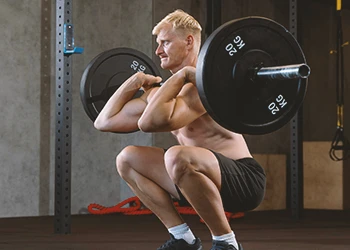
Pause at the bottom, reaching the deepest point based on your mobility. Powerlifters aim for 'below parallel,' where the hip crease is below the knee plane.
Drive Straight Upward After Pause
Drive upward immediately after the required pause. Avoid lowering the hips after the pause, relying on the 'stretch reflex,' which diminishes quad strength.
Build Maximum Power From the Bottom
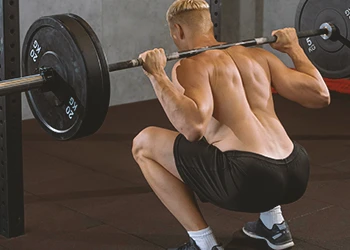
Use maximum effort to rise after the pause. Avoid standing up sluggishly, particularly with heavy loads. Focus on moving the barbell swiftly throughout the concentric range for effective squat strength training.
How to Program Pause Squats

To enhance leg power and hypertrophy, especially in the quadriceps, individuals should include pause squats in their leg training routine.
Pause squats can be effective in overcoming a plateau in barbell squat performance.
An optimal way to introduce pause squats to your routine is to schedule at least two squat sessions per week.
During the initial squat session, perform the traditional squat followed by pause squats.
In the beginning, maintain high intensity and volume on the first squat day, as you normally would, and use the second squat day primarily for improving squat technique.
After mastering the pause squat technique, I encourage my clients to progressively boost the intensity and volume during their second squat session. It's been rewarding to see how this approach contributes to their fitness journey.
Related Posts:
FAQs
How Long Should You Pause Squats?
You should pause squats for about two to three seconds. A 2-3 second pause is sufficient to eliminate the stretch reflex reaction. Longer holds can be used for extra postural strength exercises (such as trunk strength), but they have no impact on the rate of force generation.
Do Pause Squats Build Mass?
Yes, pause squats build mass. Extended time under tension and true exertion beneath the bar will force your muscles to grow.
What Are Paused Squats Good For?
Pause squats allow you to use more of your concentric and quads strength, lengthen the duration your muscles are under stress, and improve your ability to keep your body's center of gravity stable while carrying a heavy weight.
References:
- https://pubmed.ncbi.nlm.nih.gov/26667928/
- https://pubmed.ncbi.nlm.nih.gov/29644392/
- https://www.ncbi.nlm.nih.gov/pmc/articles/PMC7831128/
- https://www.ncbi.nlm.nih.gov/pmc/articles/PMC9952339/
About The Author
You May Also Like
